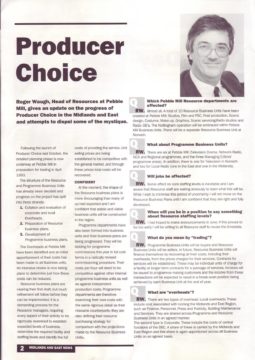The photo is of rigger driver, Ron Lane, with OB scanner, CMCR9, which was his pride and joy. Apparently he used to regularly black the wheels, and keep the truck looking its best. The truck was built in 1969 and was BBC Birmingham’s original CM1. The scanner is probably stationed at the Royal Show, Stoneleigh.
It is this scanner that has been restored by Steve Harris and his team, and now tours round different exhibitions each year.
This photo was originally shared on the Pebble Mill Engineers Facebook group. Thanks to Stuart Gandy for making it available.
The following comments were left on the Pebble Mill Facebook page:
Malcolm Hickman: ‘Ron was a great guy. Always had a tin of tyre black gloss in the cab.’
Louis Robinson: ‘The Royal Show is my best guess too. The OB team from Birmingham did a great job for us (Michael Coley, John Miller and me) with the Exhibitions Unit. Then the BBC (London) decided to go with Manchester… mistake.’




